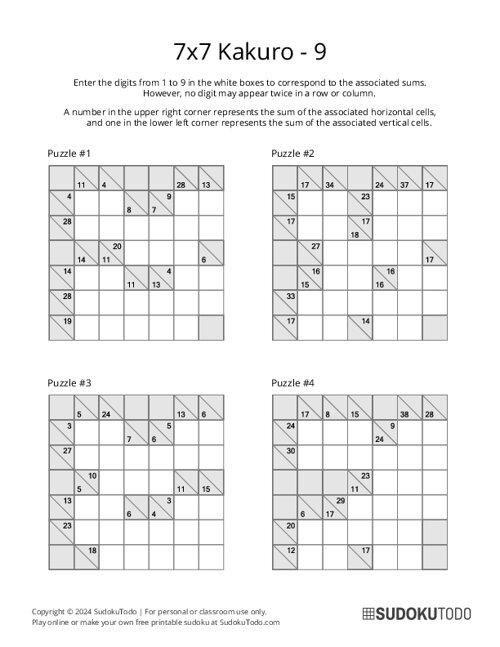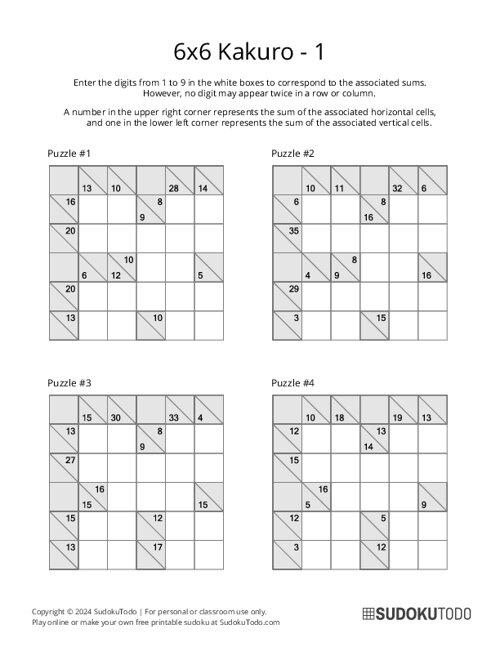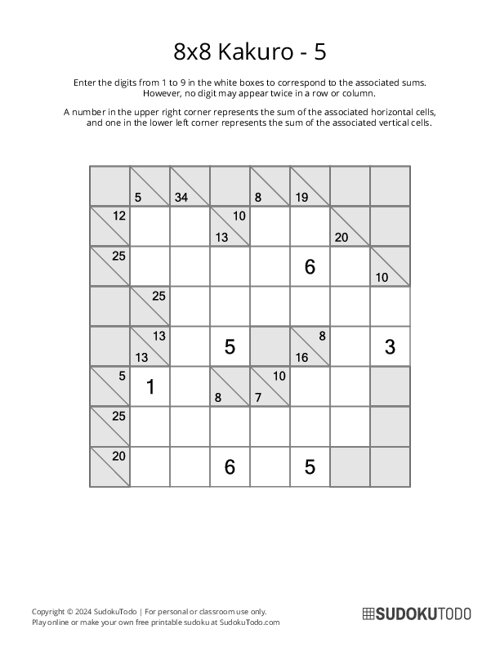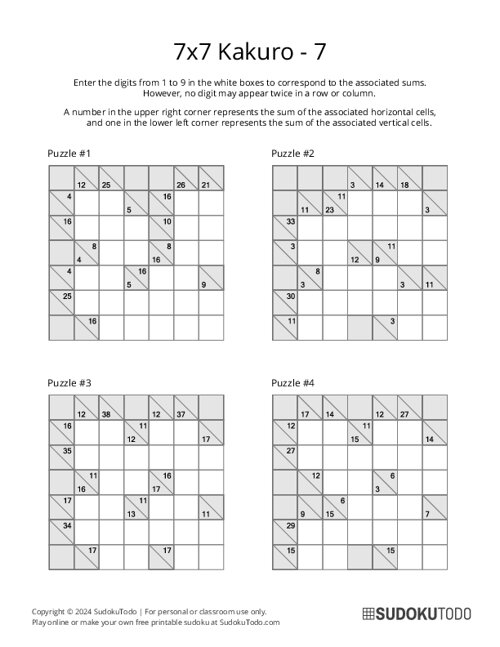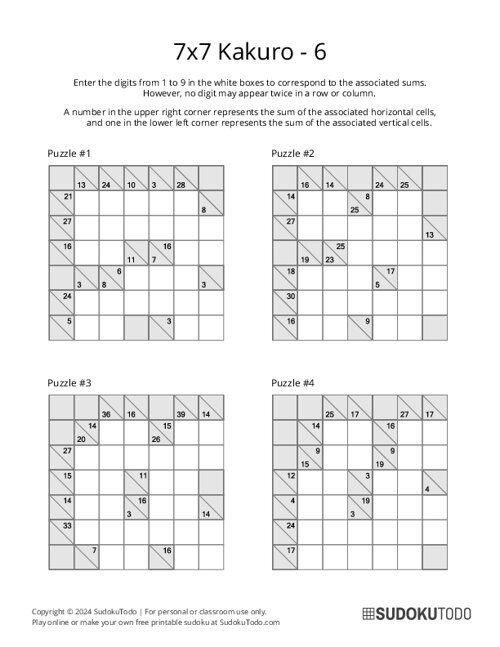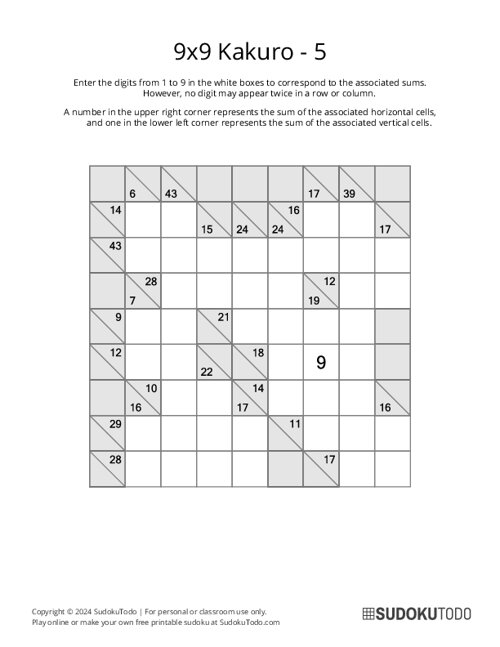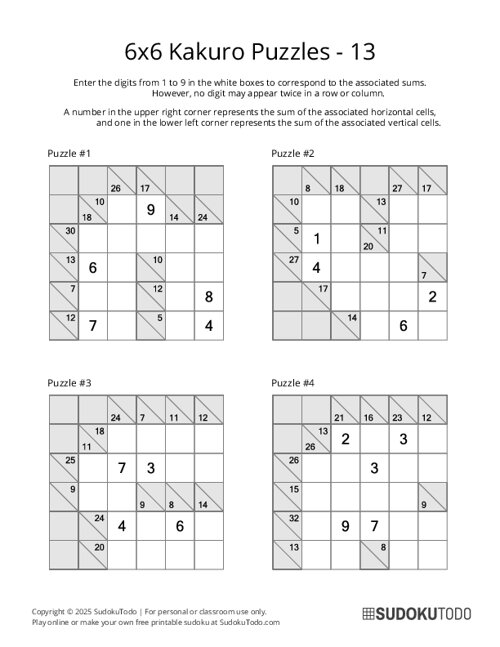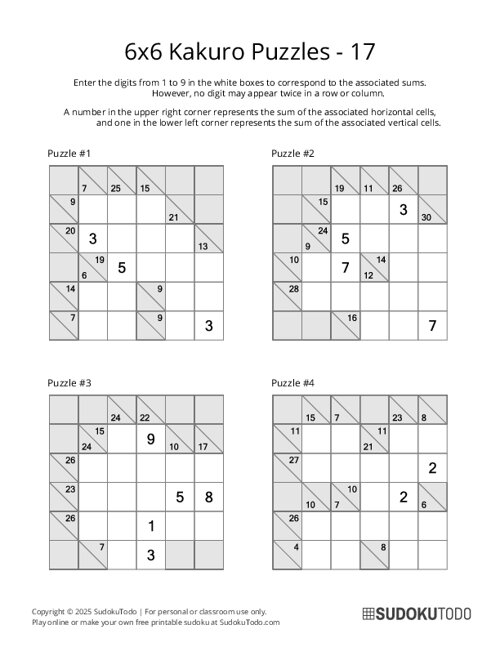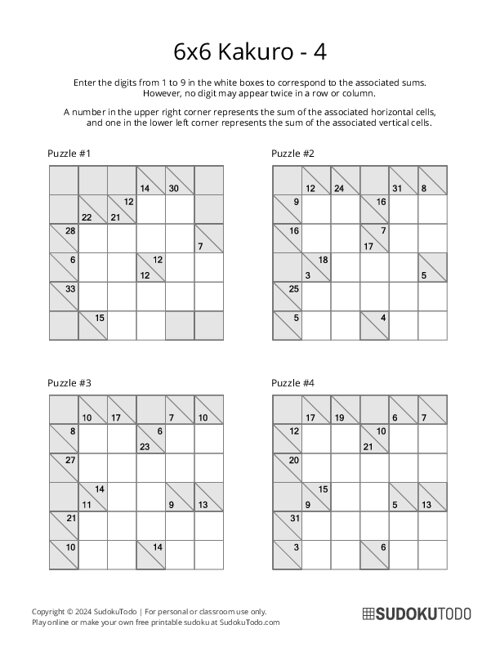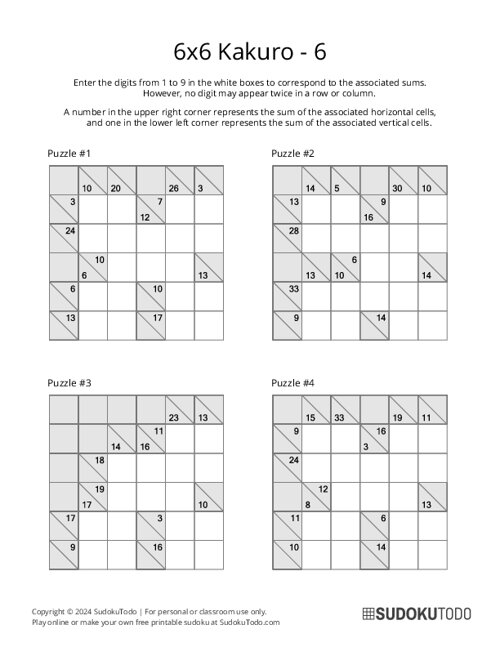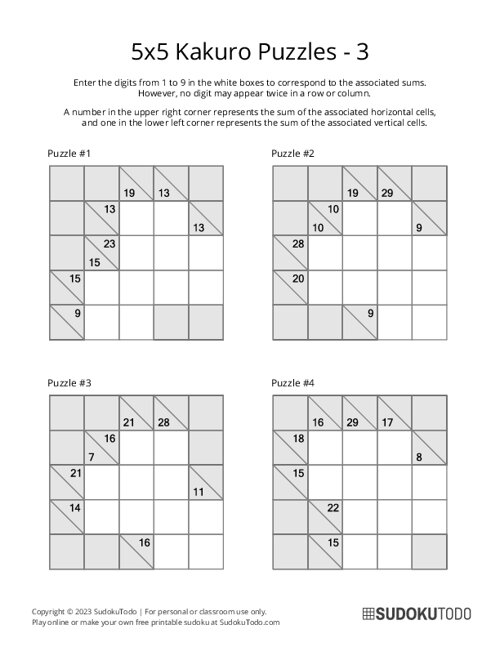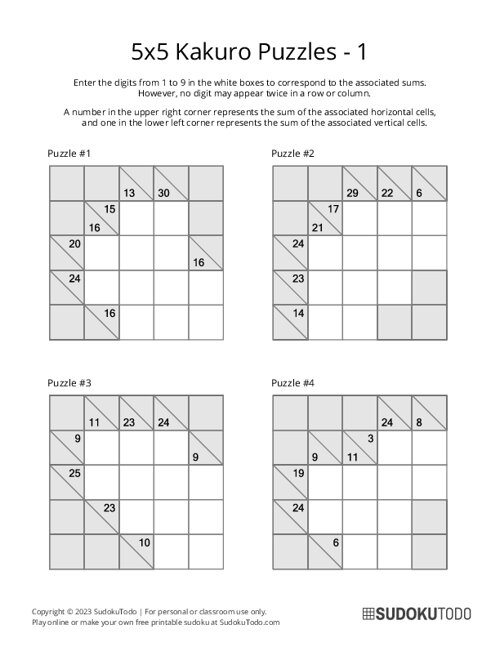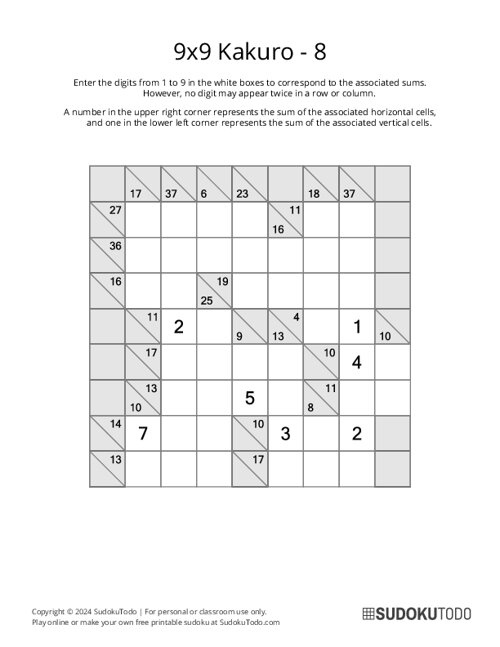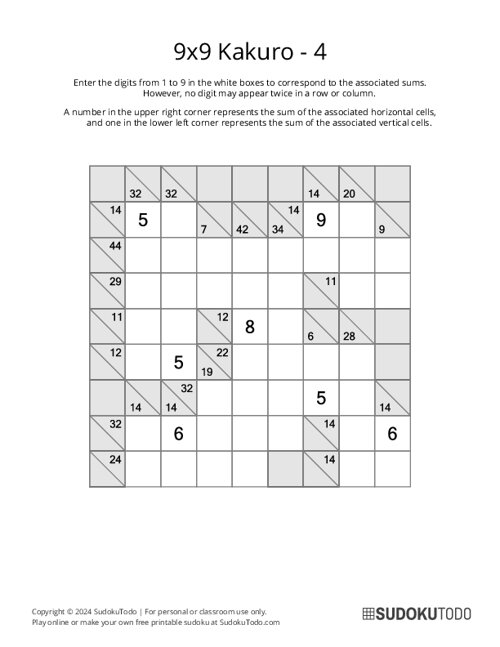Printable Sudoku
- Alphabet
- Battleships
- Binary
- Bridges / Hashi
- Chain Sudoku
- Consecutive
- Cross Sudoku
- Flower Sudoku
- Frame Sudoku
- Futoshiki
- Galaxies
- Greater Than
- Hitori
- Jigsaw Sudoku
- Kakuro
- KenKen
- Killer Sudoku
- Kropki Sudoku
- Little Killer
- Magic Squares
- Nonogram
- Odd Even Sudoku
- Outside Sudoku
- Rossini Sudoku
- Samurai Sudoku
- Sandwich
- Skyscraper
- Slitherlink
- Sohei Sudoku
- Star Battle
- Sudoku
- Sudoku for Kids
- Sudoku Mine
- Sudoku XV
- Sujiken
- Tripledoku
- Tripod Sudoku
- Twodoku
- Vudoku
- Windmill
Special Variations
Play / Solve
- Home»
- Kakuro
Kakuro Puzzles
Collection of free printable Kakuro puzzles for all skill levels. These Sudoku-like number puzzles are perfect for sharpening your math and logic skills. Download, print and solve these fun brain-teasers today.
Showing 1-15 of 80 records
Sort by:
7x7 Kakuro - 9
6x6 Kakuro - 1
8x8 Kakuro - 5
7x7 Kakuro - 7
7x7 Kakuro - 6
9x9 Kakuro - 5
6x6 Kakuro - 13
6x6 Kakuro - 17
6x6 Kakuro - 4
6x6 Kakuro - 6
5x5 Kakuro - 3
5x5 Kakuro - 1
9x9 Kakuro - 8
9x9 Kakuro - 3
9x9 Kakuro - 4
About Kakuro Puzzles
Kakuro, also called "Cross-Sum", is a fun number puzzle. It’s like a mix of a crossword puzzle and Sudoku. The goal is to fill a grid with numbers while following specific rules. The grid has empty squares to fill and some squares that give clues. The size of the grid can change depending on the puzzle.
Kakuro puzzles are fun and tricky, and they help sharpen your mind and problem-solving skills. These puzzles mix math and logic in a way that's both exciting and rewarding.
Rules / How to Play
- Number Placement: Fill in the empty white squares with numbers from 1 to 9.
- Summation: Each group of white squares, either horizontally or vertically, must add up to the number in the black square to its left or above.
- No Repeats: Each group of blank cells (a "run") in a row or column must contain unique digits (i.e., no digit can repeat within the same run).
- Clues: The shaded cells in the puzzle give you clues. Each shaded cell is divided into two parts: The top-left number tells you the total for the numbers in that row to the right. The bottom-right number tells you the total for the numbers in that column below.
Solving Tips and Techniques:
- Start with Small Sums: Some of the totals can only be made with certain numbers. For example, if two boxes must add up to 3, the only numbers that work are 1 and 2. Use this rule to figure out the possible numbers for each box.
- Subtraction: If you know the total of a group of numbers and some of the numbers in the group, you can find the missing number(s) by subtracting the known numbers from the total.
- Unique Combinations: Some sums have unique combinations of numbers. For example, a sum of 17 in three cells can only be achieved with 6, 7, and 4.
- Elimination: If a number can't go in a certain cell, cross it off the list of possible numbers for that cell. Use clues and logic to figure out which numbers don't work, based on the total sums of the nearby groups.
- Overlapping Groups: Find cells that are part of more than one group. Use the rules of both groups to limit the possible options for that cell.
- Use pencil marks: Lightly pencil in possible numbers in each cell to help you visualize the possibilities.
Kakuro is an engaging and rewarding puzzle that develops logical thinking and pattern recognition skills. Kakuro puzzles can be challenging, but with practice and these techniques, you'll be solving them like a pro in no time!
